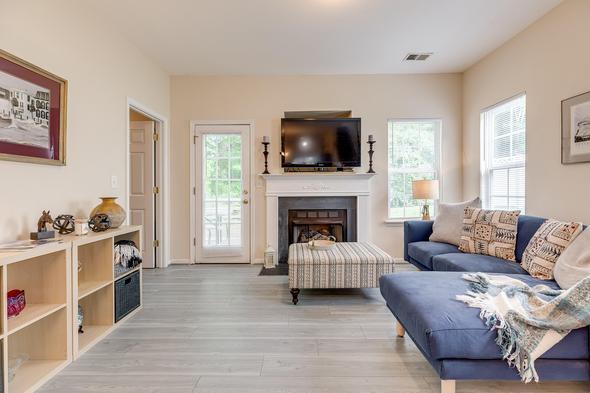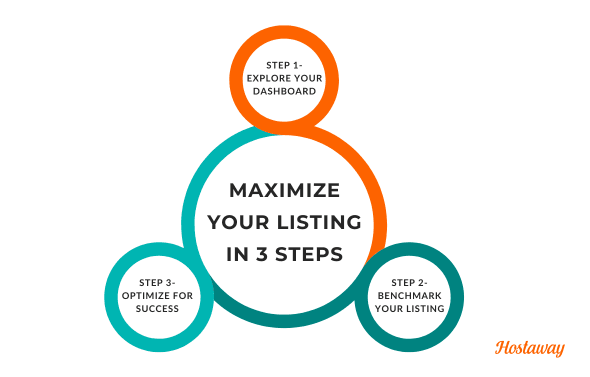Boost Bookings & Profits: Airbnb’s Similar Listings Tool

Every host wants to earn more and keep their calendar full. But when you can’t clearly see what similar listings are charging — or what guests are actually paying — setting the right price becomes guesswork.
Airbnb’s similar listings tool takes the uncertainty out of pricing. It gives you real-time data on comparable listings nearby, so you can confidently compare, adjust and stay relevant.
In this article, you’ll learn how the tool works, how to use it effectively and how to turn its insights into more bookings and better profits.
What is the Similar Listings Tool?
Airbnb’s similar listings tool is a feature within the hosting dashboard that lets you compare similar listings in your area. It shows you the average prices of both booked and unbooked listings nearby, based on filters like:
Location
Size
Features
Guest capacity
Similar amenities
And more
With this, you can see exactly what other listings are charging and how yours compares in real time. It’s like zooming out for a bird’s-eye view of your competition — only smarter.
How to Compare Prices with Similar Listings
.png?u=https%3A%2F%2Fimages.ctfassets.net%2Fpqmtoyw9z10u%2F21k4QIwhyjrYcIOeBllCXK%2Fc7ac4c18380668ccf2bcfab78ca6a27c%2FHow_to_Compare_Prices_with_Similar_Listings__2_.png&a=w%3D590%26h%3D377%26fm%3Dpng%26q%3D75&cd=2025-05-09T05%3A37%3A10.152Z)
Step 1: Choose a date or date range
Navigate to your pricing tab or calendar and select a specific date or explore trends over a date range (up to 31 nights). This helps you assess patterns in local pricing, understand market demand and plan ahead for fluctuations.
Step 2: Find your price
Look for your nightly price and you’ll see a little map icon right below it, teasing you with the promise of “compare your price.” Go ahead and tap or click it.
Step 3: Dive into the comparison
A map showing the typical rates of similar listings nearby will pop up. You get to choose if you want to see what booked places are going for or peek at the prices for those still up for grabs.
Booked vs. Available Prices: What’s the Difference?
When using the similar listings tool, you’ll notice two distinct types of pricing data: booked prices and available prices. Booked prices represent what guests have actually paid for similar listings. These figures include the base nightly rate, service fees and any other additional costs — providing a clear reflection of real guest spending behavior and actual booking trends.
On the other hand, available prices refer to the current asking rates for listings that are still unbooked. These show what other hosts are charging for their unbooked listings during the selected date range, but they don’t guarantee that guests are willing to pay those amounts. Available prices are helpful for understanding the competition in your area and identifying trends in regional rates.
By comparing both booked and available prices, you can make more informed pricing decisions. This allows you to align your nightly rate with real demand, spot opportunities to adjust your pricing strategy and ensure your listing remains attractive and competitive in the marketplace.
How Selecting a Date Range Affects Booked and Unbooked Listings

When using Airbnb’s similar listings tool, selecting a date range (instead of a single night) can affect how listings are categorized as booked or unbooked.
A booked listing is one that has already been reserved for any portion of the selected date range.
An unbooked listing is one that still has availability within that same range.
Because bookings often overlap or vary by night, a single listing can fall into both categories at once. For instance, if you select a 5-night date range, and a similar listing has already been booked for 2 of those nights but remains available for the remaining 3, it would appear as both a booked and unbooked listing.
This overlap ensures the tool gives you a complete picture of how listings are performing — showing both their confirmed bookings and ongoing availability — which is key for setting competitive and flexible pricing.
The Perks: What's In Store For You
In the Hostaway Webinar Series, Julia Herrington, Airbnb's market manager, highlights just how valuable this tool is for hosts aiming to optimize their listings. She describes it as a key resource for those wanting to book out their spaces or understand what's in demand. It's like getting a comprehensive overview of your competition, enabling you to fine-tune their pricing with sharp accuracy.
For hosts, the benefits are clear and compelling. With the snap of a finger, the instant price check lets you see how your space measures up to similar spots in your area. It's all about setting a price that's tempting for guests but still keeps your finances in the green.
Plus, it eliminates the need for guesswork by providing reliable real-time information on current pricing and demand trends. With these insights, you're better equipped to attract guests during busy seasons and adapt when the market shifts.
In short, this gives you the power to adjust your pricing with newfound confidence like never before. It arms you with the knowledge needed to keep your listing both competitive and profitable, ensuring you attract guests without selling your space short.
Maximizing Your Listing: Step-by-Step Guide

Step 1- Explore your dashboard
Start by opting into the tool through your hosting dashboard. Navigate to the ‘Insights' tab and explore subcategories like Quality, Conversion or Occupancy and rates
Step 2- Benchmark your listing
Use the ‘Compare' option to select ‘Similar listings' and view the comparative graph. This feature shows how your listing stacks up against others in terms of price, amenities, reviews and more.
Step 3- Optimize for success
Based on your findings, adjust your pricing, consider adding amenities or unique features to increase your listing's appeal and set up custom promotions to target specific goals.
Simple Yet Powerful
The Airbnb similar listings tool is designed to make hosting easier, smarter and more profitable. With just a glance, you get an overview of your market, understand what others charge and make decisions that help your listing stay appealing — all without the confusion.
Armed with real-time comparisons, pricing insights and local data, you’re no longer just guessing — you're optimizing.
So go ahead: open your dashboard, compare prices and let the insights guide you to better bookings, better profits and a better guest experience.
P.S. Don't forget to leverage a channel manager for vacation rentals to get the most out of Airbnb and every other OTA!
FAQs
Q1: What's the difference between booked and available prices?
A: Booked prices reflect what guests actually paid (including fees), while available prices show what unbooked listings are charging.
Q2: Can a listing be both booked and unbooked?
A: Yes — over a date range, a property might be booked for some nights and available on others.
Q3: What makes a listing “similar”?
A: Airbnb matches based on location, size, features, guest capacity and related perks, as well as what guests tend to view together.
Q4: How often should I check my listing's performance with this tool?
A: Regular reviews can help you stay competitive especially before peak seasons or during local events that may affect demand.
Q5: Can I see specific prices for similar listings?
A: The tool shows typical rates for similar listings, both booked and available, providing a benchmark rather than specific figures.